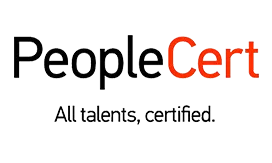
MoR® Certification Course: The Management of Risk
The MoR® certification by PeopleCert equips you with essential risk management skills, guiding you through identifying, assessing, and controlling risks, ensuring strategic goals and resource efficiency.
Choose Delivery Methods / Available Dates



Why Bakkah?
What should you expect from this MoR Course?
MoR is a cross-cutting and flexible approach that organizations implement to manage risks effectively by identifying, assessing, and controlling them. It can be applied to different companies regardless of the size or industry. This framework helps organizations save money and time from loss, use resources effectively, and foster contingency management. With the professional application of this framework, organizations can achieve their strategic goals in projects or programs.
M_o_R is suitable for any organization or individual seeking the need for guidance on a controlled approach to the identification, assessment, and control of risk at the strategic, program, project, and operational perspectives.
What are the goals of the MoR course?
MoR course equips you with solid knowledge at the fundamental level, then entitles you to manage risks professionally at the practitioner level. Here are the expected learning goals from this course:
1- Understanding the MoR basics
Through the fundamental level, you’ll learn the main principles of risk management, terms, techniques, and tools of the MoR framework, differentiate the various types of risks, and identify how to apply continuous improvement in risk management.
2- Mastering the risk management process
You’ll clearly understand the four steps of the risk management process which include: identification, assessment, response, and monitoring. You’ll identify these steps through models of risk management. Additionally, you’ll learn how to apply risk management practices to project management.
3- Risk management implementation
With the practitioner level, you’ll be well-qualified to apply risk management in real-world projects, as you’ll learn how to master applying effective response plans, know how to develop them and be able to integrate risk management into project and portfolio environments. Also, you’ll learn how to improve the risk management system by applying the culture of continuous improvement.
Who needs this MOR Course And Certification?
The MoR certification is designed for individuals who seek to tackle threats and leverage opportunities effectively. So, it’s aimed at:
- Business Change Managers.
- Programme and Project Managers.
- Risk Managers.
- Business Programme and Project Support Staff and Managers.
- Operational Staff and Managers.
- Staff and Managers from other disciplines, particularly those responsible for establishing standards and/or integrating them with MoP®portfolio management, MSP® programme management and PRINCE2® project management.
MOR Certification Online Training
The MoR online training details offered by Bakkah include the following:
- 5 Days of training.
- Exam Simulation.
- Group Activity (Break-out Session) after each lesson.
- Practice Tests.
- Access to additional References – Glossary/ Recommended Reading/ Syllabus.
- Material language will be in English.
MOR Certification and Exam Prerequisite
Once you decide to get ready for the MoR exam, you need to be aware of the exam prerequisite of both levels, so get all these details through Bakkah:
Foundation:
- None.
Practitioner:
To take the M_o_R Practitioner examination, you must hold a current M_o_R Foundation certificate.
MOR Certification Exam Format
Foundation:
- Multiple-choice examination questions.
- 75 questions.
- Five questions are ‘trial questions’ and are not counted in the scores.
- 35 marks required to pass (out of 70 available) - 50%.
- 60 minutes duration.
- Closed-book exam.
Practitioner:
- Objective testing.
- Four questions, 20 marks available per question.
- 40 marks required to pass (out of 80 available) - 50%.
- Three hours duration.
- Open book exam. Candidates may use the official printed hard copy of the Management of Risk: Guidance for Practitioners guide together with the ABC Guide Part A Example Techniques guidance document.
- The manual may be annotated and tabulated but no sticky notes and loose-leaf papers containing additional notes will be allowed.
MOR Certification Exam Instruction
- You must pass the Management of Risk MoR Course Foundation exam before the Practitioner exam, either on the same day or separately.
- If you sit the Foundation examination only and pass, you will receive a Foundation examination certificate.
- If you take both the Foundation and Practitioner exams on the same day, and pass both, you will receive a Practitioner examination certificate only.
Course Inclusions
Introduction
- Risk & Risk Management Definitions
- The importance of risk management
- Corporate governance and internal control
- Where and when risk management is applied
Management of Risk Principles
- Introduction to Risk Management Principles
- Principle 1: Aligns with objectives
- Principle 2: Fits the context
- Principle 3: Engages stakeholders
- Principle 4: Provides clear guidance
- Principle 5: Informs decision-making
- Principle 6: Facilitates continual improvement
- Principle 7: Creates a supportive culture
- Principle 8: Achieves measurable value
Management of Risk Approach
- Introduction to risk management approach
- Risk management policy
- Risk management process guide
- Risk management strategy
- Risk & issue registers
- Risk improvement plan
- Risk communication plan
- Risk progress report
- Relationship between documents
Management of Risk Process
- Introduction to the risk management process
- Common process barriers
- Communication throughout the process
- Step 1: Identify - context
- Step 1: Identity - identify the risks
- Step 2: Assess - estimate
- Step 2: Assess - evaluate
- Step 3: Plan
- Step 4: Implement
Embedding & Reviewing Management of Risk
- Introduction about embedding & reviewing risk management
- Embedding the principles
- Changing the culture of risk management
- Measuring value
- Overcoming the common barriers to success
- Identifying & establishing opportunities for change
Perspectives
- Introduction about the different perspectives in any organization
- Strategic perspective
- Program perspective
- Project perspective
- Operational perspective
- Achieving measurable value
- Integrating risk management across perspectives
- Roles & Responsibilities
For Business
Empower Your Team with World-Class Corporate Training
Tailored learning experiences for businesses of all sizes. Boost productivity, close skill gaps, and unlock your team's full potential with Bakkah globally accredited programs.
FAQs
Through Bakkah, you can easily purchase the exam voucher. However, the registration and examination processes are handled directly between the trainee and the accreditation body. As an accredited partner, we can provide support whenever needed, but are not responsible for issues related to technical problems, scheduling, or your exam readiness.
No, there is no prerequisites for this course. To take up practitioner exam - you must hold a current M_o_R Foundation certificate.
Yes, it is accredited from PeopleCert on behalf of Axelos.
No
This course is available only for self-study.
No, the fees don't include the exam fees.
- Dutch (Foundation only)
- English (all examinations)
- German (Foundation only)
- Polish (all examinations)
Exam results will be announced within 2 business days after the candidate’s answers are officially submitted to us by the exam supervisor. In case you have received an email from PeopleCert informing you that there are pending actions from your side, please make sure that you complete the actions for the exam results to be issued.
Passing Criteria is 50%
- Yes, you can retake it. PeopleCert offers the Take2exam re-sit service at an affordable price.
- You can purchase it along with the exam.
- If you succeeded, TAKE2 fees is nonrefundable.
- If you failed, you could take another chance using TAKE2.
- The Foundation Exam has no expiration period.
- A candidate who passes the Practitioner's Exam is recognized as a "Registered Practitioner in Risk Management (M_o_R®)", and the registration period is five years.
- To maintain registration, practitioners must complete and pass the Risk Management Re-Registration (MoR) exam three to five years after receiving the practitioner's previous certification.
Yes, you can get your hard copy Certificate. You need to order your hard copies through the PeopleCert Account with standard or courier delivery.
The dispatch and delivery times are below:
Standard Delivery (dispatched within 3-5 business days)
- 4-6 weeks - Europe
- 6-8 weeks - Rest of the world (exc. Europe)
Courier Delivery (dispatched within 1-2 business days)
- Delivered in up to 5 business days
English
English
Online classes are delivered using our Learning Management System (LMS). We provide access to pre-course reading, pre-post assessment, chapter exercises, practice test, case studies and to additional references Glossary/Recommended Reading in our LMS.
Yes. All candidates who acquired PeopleCert’s certifications will need to renew them within three years of their original certificate dates.
Please check the examples listed below:
- If certified before 30 June 2020: your certification will be valid until 1 July 2023 to renew your certificate, regardless of the original acquired date.
- If certified after June 2020: your certification(s) shall be renewed within 3 years of the original acquired date.
From 15 January 2023, you have renewal paths available as listed below:
- Retake the same exam: you can renew your certification by re-taking your original exam before the renewal date.
- Take further courses and certifications: you can renew your certification by attending another course and taking an exam within the same product package before the renewal date.
Please note that candidates who do not renew their certifications will still be included on the Successful Candidates Register (SCR) and the Candidate Verification Service (CVS).
However, a note will be added to their record to indicate that their certification needs to be renewed to align with current certification requirements.

